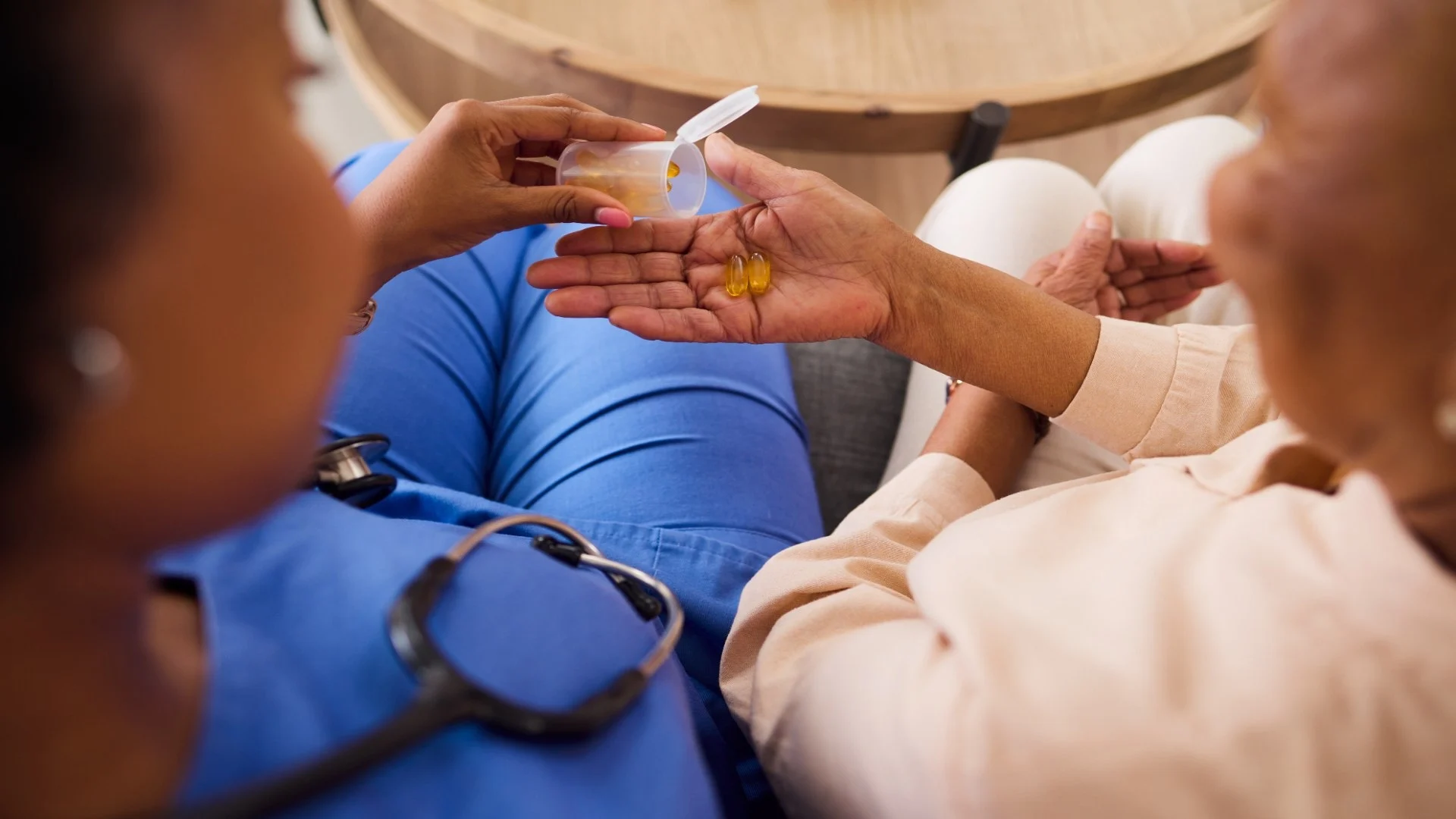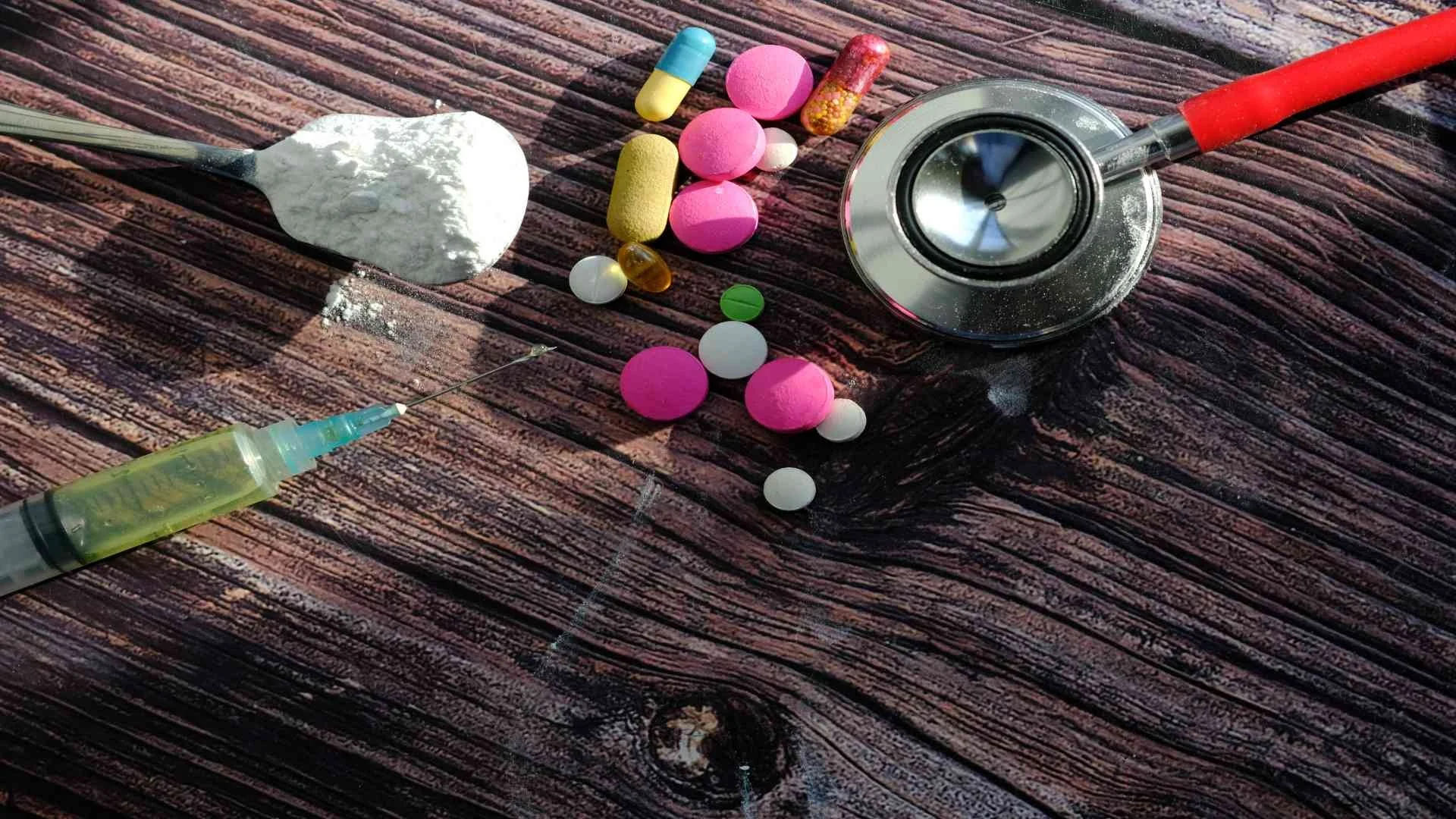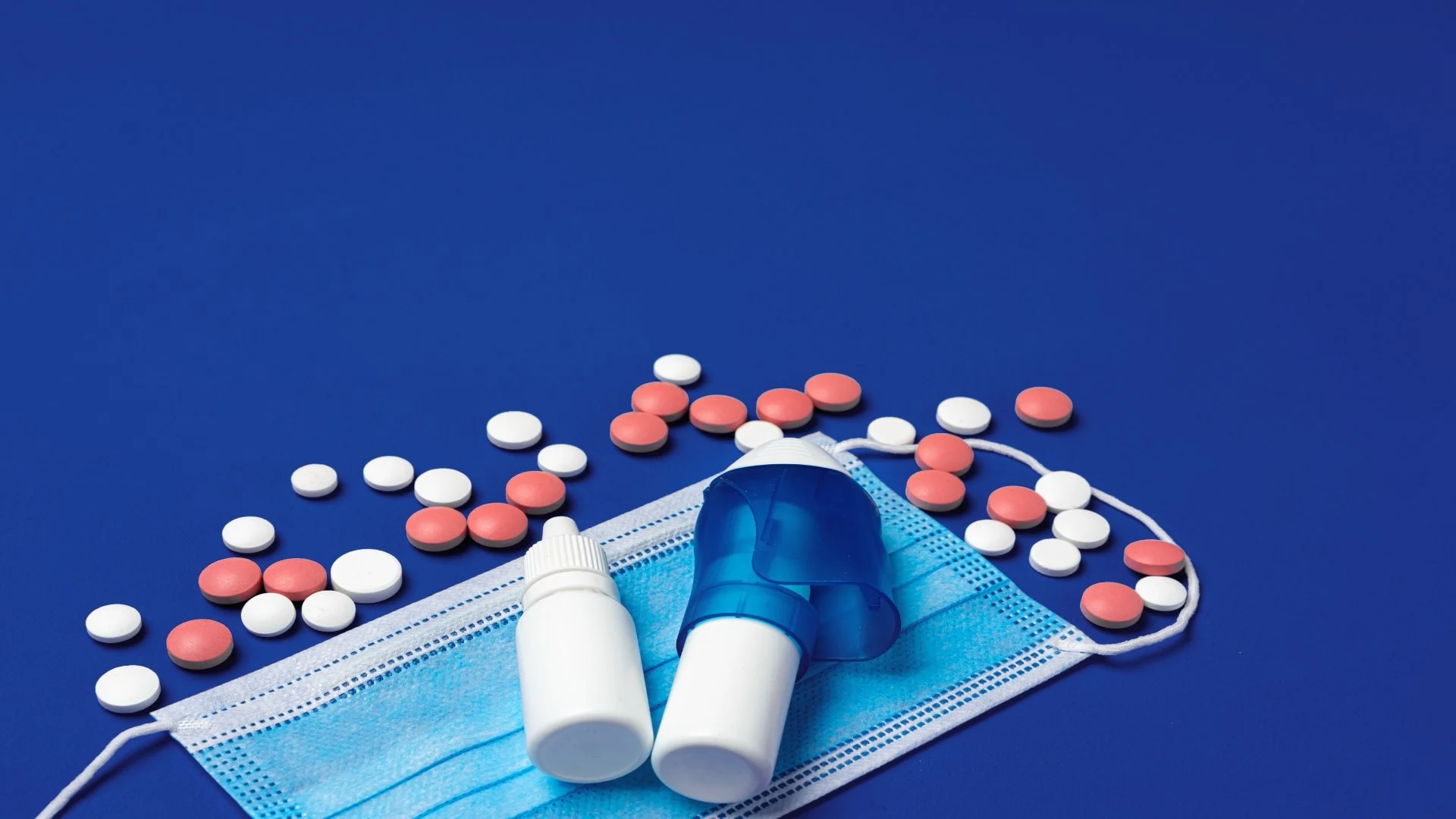Drug and Alcohol
Opioid vs Opiate

Learn the key differences between opioid vs opiate and how they impact addiction recovery. Gain insights into treatment options for a better life free of addiction.
What is the difference between opioids and opiates?
Opiates are naturally derived from the opium poppy plant, like morphine and codeine. Opioids include both natural opiates and synthetic or semi-synthetic drugs like oxycodone and fentanyl. While they work similarly, opioids often have more potent effects and higher addiction risks.
Can someone develop an addiction to prescription opioids?
Yes, addiction to prescription opioids can occur, even when taken as directed. Over time, the body may build tolerance, leading to increased use. The euphoric effects make them easy to misuse, which can quickly develop into physical dependence and opioid use disorder.
What are the signs of opioid use disorder?
Signs include intense cravings, inability to stop using, withdrawal symptoms, and neglect of personal or work responsibilities. Continued use despite harmful consequences is a significant indicator of addiction. Behavioral changes, isolation, and frequent drowsiness may also point to a developing opioid use disorder.
How is opioid use disorder treated?
Opioid use disorder is treated with medication-assisted treatment (MAT), behavioral therapy, and professional support. FDA-approved medications like methadone, buprenorphine, and naltrexone help reduce cravings and withdrawal symptoms, while counseling addresses the emotional and psychological aspects of addiction for long-term recovery.
What should I do if I suspect a loved one has an opioid addiction?
Approach them with care and concern, not judgment. Encourage open conversation and suggest professional help. The Edge Treatment Center offers compassionate, personalized treatment programs to support recovery. Getting them into a safe, structured environment can be the first step toward healing.
Are you or a loved one struggling with addiction to opioids or opiates? It’s easy to confuse the two, but understanding the difference is essential to your recovery journey. The truth is, both opioids and opiates can take a devastating toll on your life, but they don’t have to define your future.
At The Edge Treatment Center, we specialize in helping individuals break free from addiction through personalized treatment plans. By understanding the differences between opioid vs opiate, you can take the first step toward healing and regaining control of your life.
Definitions
What Are Opiates?

Opiates are natural substances derived from the opium poppy plant (Papaver somniferum). These substances have been used for centuries due to their powerful pain-relieving properties and are an integral part of modern medicine.
Examples of Opiates
Morphine: One of the most widely known opiates, morphine is a potent pain reliever often prescribed for severe pain, particularly in post-surgery or cancer patients. It works by binding to opioid receptors in the brain, reducing the sensation of pain.
Codeine: A milder opiate, codeine is often used to treat moderate pain and coughing. It is commonly found in combination with other medications like cough syrup and painkillers.
What Are Opioids?
Opioids are a broad class of drugs that include natural, semi-synthetic, and synthetic substances. These drugs are designed to mimic the effects of opiates—natural substances derived from the opium poppy plant—by interacting with opioid receptors in the brain and spinal cord. Opioids work by blocking pain signals and producing feelings of euphoria, making them effective for pain management but also highly addictive.
Examples of Opioids:
Oxycodone: A semi-synthetic opioid used for managing moderate to severe pain.
Hydrocodone: Often combined with other medications to treat pain and cough.
Fentanyl: A synthetic opioid that is 50-100 times stronger than morphine, used for severe pain management.
Heroin: An illegal, highly addictive opioid derived from morphine.
Opioids are designed to provide similar pain relief as natural opiates but with varying levels of potency and duration. However, they also carry a high risk of dependence and overdose.
Key Differences Between Opiates and Opioids
The primary difference between opiates and opioids lies in their origin. Opiates are naturally occurring substances derived from the opium poppy plant, such as morphine and codeine. Opioids, on the other hand, include both natural opiates and synthetic or semi-synthetic substances, like fentanyl, oxycodone, and heroin.
Chemically, opiates consist of alkaloids directly extracted from the opium poppy, while opioids can be altered or created in labs to mimic opiate effects. This difference in composition can impact how the drugs interact with the body.
In terms of potency, opioids can be much more potent than opiates. For example, fentanyl is far more powerful than morphine. This increased potency also elevates the risk of addiction and overdose, especially with synthetic opioids.
While opiates generally carry a lower risk of dependence, opioids, due to their more potent effects, pose a greater danger of addiction and misuse.
The Impact of Opioid and Opiate Use on the Brain
Opioids and opiates have a powerful effect on the brain, influencing how we feel pain, experience pleasure, and, over time, develop dependence or addiction.
Interaction with Opioid Receptors
Opioids and opiates affect the brain by binding to opioid receptors, which are located in the brain, spinal cord, and other areas of the body. These receptors regulate pain, emotion, and the experience of reward. When activated by these substances, the receptors block pain signals and trigger a release of dopamine, resulting in feelings of pain relief and euphoria.
Effects on Pain Perception and Mood
By altering the way the brain perceives pain, opioids and opiates provide significant relief for those suffering from moderate to severe pain. However, they also influence mood by increasing dopamine levels, leading to intense pleasure and a sense of well-being.
This mood-enhancing effect is what often leads to misuse, as individuals begin to seek not just pain relief, but emotional escape.
Potential for Dependence and Addiction
With repeated use, the brain begins to adapt, producing fewer natural endorphins and relying more heavily on the external substance.
This leads to tolerance, where more of the drug is needed to feel the same effect, and dependence, where the body can’t function properly without it. Eventually, addiction can develop, characterized by compulsive use despite negative consequences.
Withdrawal symptoms—such as anxiety, muscle pain, and nausea—can make quitting difficult without professional help.
These lasting changes in brain chemistry highlight why opioids and opiates carry such a high risk of addiction and why medically supervised treatment is essential for lasting recovery.

We’re Here To Help You Find Your Way
Would you like more information about mental health or drug addiction? Reach out today.
Understanding Opioid Use Disorder (OUD)

Opioid Use Disorder (OUD) is a chronic medical condition that involves the compulsive use of opioids despite harmful consequences. It occurs when someone becomes physically and psychologically dependent on opioids—whether prescription medications like oxycodone or illegal drugs like heroin—and struggles to stop using them.
Prevalence and Impact
OUD has become a widespread public health crisis, affecting millions of people globally. In the United States alone, hundreds of thousands battle OUD each year, with thousands of lives lost due to overdose.
Beyond individual suffering, the disorder also takes a heavy toll on families, communities, and healthcare systems. It contributes to increased hospitalizations, lost productivity, and emotional distress among family members and loved ones.
Importance of Early Intervention
Early intervention and treatment are critical for managing OUD and preventing long-term harm. When identified early, individuals have a better chance of recovering with fewer complications.
Treatment options may include medication-assisted treatment (MAT), therapy, and ongoing support. Without intervention, OUD can worsen, increasing the risk of overdose and long-term health damage.
Treatment Options for Opioid Use Disorder
Treating Opioid Use Disorder (OUD) requires a comprehensive, personalized approach that addresses both the physical and psychological aspects of addiction.
Successful recovery often combines behavioral therapy with medication-assisted treatment (MAT) to support long-term healing and reduce the risk of relapse.
Behavioral Therapy
Behavioral therapies, such as Cognitive Behavioral Therapy (CBT) and Contingency Management, help individuals understand the root causes of their addiction, develop healthier coping strategies, and rebuild their lives.
Therapy also plays a crucial role in identifying and addressing co-occurring mental health conditions like anxiety or depression.
Medication-Assisted Treatment (MAT)
MAT uses FDA-approved medications to ease withdrawal symptoms, reduce cravings, and restore brain balance. It is considered a gold standard in OUD treatment and significantly increases the chances of sustained recovery.
FDA-Approved Medications
Methadone: A long-acting opioid that reduces cravings and withdrawal without producing a high when taken as prescribed.
Buprenorphine: A partial opioid agonist that offers similar benefits with a lower risk of misuse.
Naltrexone: An opioid antagonist that blocks the effects of opioids and prevents relapse.
Personalized Treatment Plans
Every individual’s recovery journey is unique. That’s why personalized treatment plans, which consider a person’s health history, addiction severity, and mental well-being, are essential for effective care. Tailored support offers the best chance at long-term success and a life free from opioid addiction.

We’ll Lead You to New Heights
Do you have more questions about mental health or drug addiction? Reach out.
Opioid or Opiate Use Taking Over Your Life? We Can Help

Understanding the difference between opioid vs opiate is more than just a medical distinction—it’s a crucial step toward recovery. Whether you or someone you love is struggling with prescription painkillers, heroin, or other opioids, help is available.
At The Edge Treatment Center, we offer compassionate, personalized care to guide you through every stage of recovery. From evidence-based therapies to medication-assisted treatment, our programs are designed to support lasting healing. You don’t have to face this alone—reach out today and start your journey toward a life free from addiction.

We’re Here To Help You Find Your Way
If you or a loved one is struggling with addiction, there is hope. Our team can guide you on your journey to recovery. Call us today.
Written by
The Edge Treatment Center
Reviewed by
 Jeremy Arzt
Jeremy ArztChief Clinical Officer
Drug and Alcohol
July 22, 2025
